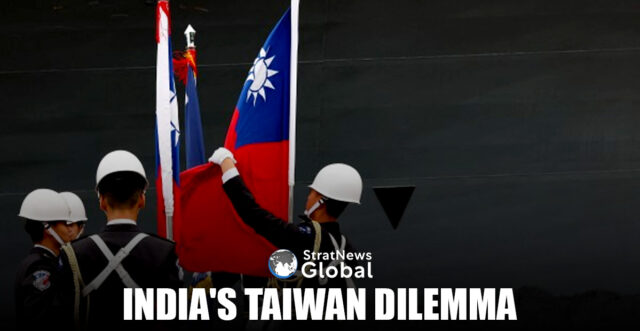Taiwan’s 2025 Quadrennial Defence Review (QDR) signals a decisive shift in its security posture, underscoring asymmetric warfare, strategic alliances, and defence resilience in response to mounting tensions with China.
For India, this development carries significant geopolitical and economic implications, particularly as New Delhi navigates its complex relationship with both Taipei and Beijing.
As China intensifies its military assertiveness across the Indo-Pacific, the Taiwan-India dynamic is emerging as an understated yet crucial element in regional security. The QDR’s focus on bolstering Taiwan’s deterrence capabilities aligns with India’s own concerns over an increasingly aggressive China, both at the Line of Actual Control (LAC) and in the maritime domain.
New Delhi has long maintained a One-China policy, but its economic and strategic engagements with Taipei have quietly deepened in recent years. The QDR reinforces the idea that Taiwan is no longer a passive actor but an active player in shaping regional security—a development that India cannot afford to ignore.
For India, Taiwan presents both a strategic opportunity and a diplomatic risk:
• Strategic Opportunity: A stronger Taiwan means a China that is preoccupied on multiple fronts, which could reduce Beijing’s focus on pressuring India at the LAC.
• Diplomatic Risk: Openly aligning with Taiwan could provoke Beijing, triggering economic retaliation or increased military posturing along India’s northern borders.
So far, India has opted for a calibrated approach, strengthening economic ties, technology partnerships, and informal security dialogues with Taiwan, without formally challenging China’s territorial claims. However, with Taiwan becoming a key focus in Quad discussions, New Delhi may find it harder to maintain this ambiguity.
Both New Delhi and Taipei face an increasingly hostile Beijing, albeit in different theatres. While China continues to challenge India’s sovereignty in Ladakh and Arunachal Pradesh, it has simultaneously ramped up military drills and gray-zone tactics against Taiwan.
The QDR underscores Taiwan’s shift towards asymmetric defence strategies, focusing on cyber warfare, missile deterrence, and advanced reconnaissance systems—an approach that mirrors India’s military moderniaation efforts in response to China’s overwhelming conventional superiority.
India and Taiwan’s shared interest in countering China’s influence could pave the way for deeper intelligence sharing, cybersecurity cooperation, and defence technology collaborations—all within a framework that avoids outright provocation.
Beyond defence, the QDR also stresses Taiwan’s economic resilience and need for diversified global partnerships—a space where India has a vital role to play.
Taiwan’s dominance in semiconductor manufacturing presents India with a critical opportunity to secure its own place in the global supply chain. With China trying to control chip exports, India’s efforts to build a domestic semiconductor industry can benefit from stronger Taiwan-India collaborations.
Recent agreements between Taiwanese chip manufacturers and India’s “Make in India” initiative suggest a growing economic-security synergy, which could counterbalance China’s technological dominance in the region.
With Taiwan’s 2025 Defence Review reaffirming its Indo-Pacific security alignment, India faces three possible paths:
• Maintain Strategic Ambiguity – Continue engaging Taiwan economically while avoiding official diplomatic recognition or military cooperation.
• Deepen Security Coordination – Expand covert intelligence sharing, cybersecurity partnerships, and semiconductor collaborations, without crossing Beijing’s red lines.
• Assert a More Proactive Indo-Pacific Role – Engage Taiwan as part of broader Quad efforts, signalling a shift in India’s China policy.
As Taipei fortifies its defence capabilities, India must decide how far it is willing to push the boundaries of its Taiwan policy. Can New Delhi continue to walk the fine line between strategic engagement and diplomatic caution? Or will growing tensions in the Indo-Pacific force India to take a firmer stand?
The next few years will test India’s ability to balance regional security, economic ambitions, and geopolitical risks—with Taiwan emerging as a key piece in the Indo-Pacific chessboard.
In a career spanning three decades and counting, Ramananda (Ram to his friends) has been the foreign editor of The Telegraph, Outlook Magazine and the New Indian Express. He helped set up rediff.com’s editorial operations in San Jose and New York, helmed sify.com, and was the founder editor of India.com.
His work has featured in national and international publications like the Al Jazeera Centre for Studies, Global Times and Ashahi Shimbun. But his one constant over all these years, he says, has been the attempt to understand rising India’s place in the world.
He can rustle up a mean salad, his oil-less pepper chicken is to die for, and all it takes is some beer and rhythm and blues to rock his soul.
Talk to him about foreign and strategic affairs, media, South Asia, China, and of course India.





